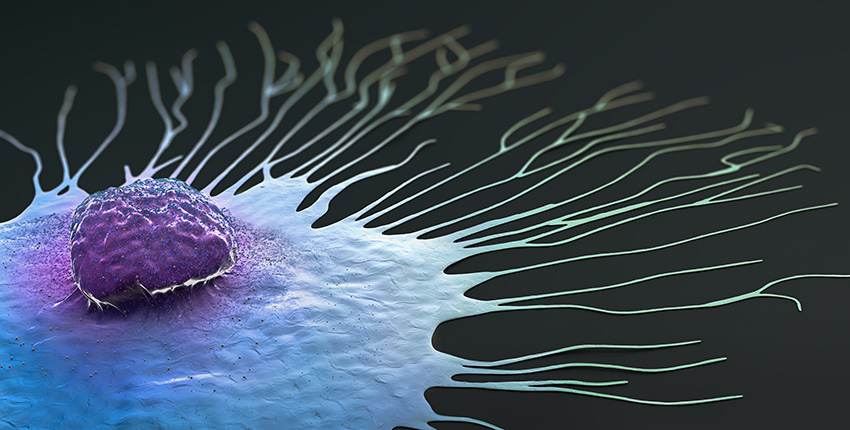
Image: Christoph Burgstedt/iStock/Getty Images Plus
When someone is diagnosed with cancer, the epicenter of the tumor is easily identifiable, but in 1 to 2 percent of cases, the primary site of tumor origin cannot be determined. Because many modern cancer therapies target primary tumors, the prognosis for a cancer of unknown primary origin is poor, with a median overall survival of 2.7 to 16 months.
In order to receive a more specific diagnosis, patients often must undergo extensive diagnostic workups that can include additional laboratory tests, biopsies, and endoscopy procedures, which delay treatment.
To improve diagnosis for patients with complex metastatic cancers, especially those in low-resource settings, Harvard Medical School researchers in the Mahmood Lab at Brigham and Women’s Hospital have developed an artificial intelligence system that uses routinely acquired histology slides, or tissue biopsies, to accurately pinpoint the origins of metastatic tumors while generating a differential diagnosis for patients in whom the site of the primary tumor is unknown.
The team’s research findings and approach are described in Nature.
“Almost every patient who has a cancer diagnosis has a histology slide, which has been the diagnostic standard for over a hundred years. Our work provides a way to leverage universally acquired data and the power of artificial intelligence to improve diagnosis for these complicated cases that typically require extensive diagnostic workups,” said corresponding author Faisal Mahmood, assistant professor of pathology at HMS and a member of the Division of Computational Pathology at Brigham and Women’s.
The deep learning-based algorithm developed by the researchers, called tumor origin assessment via deep learning (TOAD), simultaneously identifies the tumor as primary or metastatic and predicts its site of origin.
The researchers trained their model with gigapixel pathology whole-slide images of tumors from over 22,000 cancer cases, and then tested TOAD in about 6,500 cases with known primary tumors and analyzed increasingly complicated metastatic cancers to establish utility of the AI model on cancer cases with unknown primary sites.
For tumors with known primary origins, the model correctly identified the cancer 83 percent of the time and listed the diagnosis among its top three predictions 96 percent of the time.
The researchers then tested the model on 317 cancer cases with unknown primary origin for which a differential diagnosis was assigned, finding that TOAD’s diagnosis agreed with pathologists’ differential diagnoses 61 percent of the time.
When the researchers examined the top three diagnoses generated by TOAD, they found that the pathologists’ differential diagnosis was among the results in 82 percent of cases.
TOAD’s performance was largely comparable to the performance reported by several recent studies that used genomic data to predict tumor origins. While genomic-based AI offers an alternative for aiding diagnoses, genomic testing is not always performed in patients, especially in low-resource settings.
The researchers hope to continue training their histology-based model with more cases and to engage in clinical trials to determine whether the model improves diagnostic capabilities and patients’ prognoses.
“The top predictions from the model can accelerate diagnosis and subsequent treatment by reducing the number of ancillary tests that need to be ordered, reducing additional tissue sampling, and reducing the overall time required to diagnose patients, which can be long and stressful,” Mahmood said.
“Top three predictions can be used to guide pathologists’ next steps, and in low-resource settings where pathology expertise may not be available, the top prediction could potentially be used to assign a differential diagnosis. This is only the first step in using whole-slide images for AI-assisted cancer origin prediction, and it’s a very exciting area with the potential to standardize and improve the diagnostic process.”
This work was supported by internal funds from BWH Pathology, NIH NIGMS R35GM138216, Google Cloud Research Grant, Nvidia GPU Grant Program, and the NIH Biomedical Informatics and Data Science Research Training Program (NLM T15LM007092).
Adapted from a Brigham and Women’s news release.


